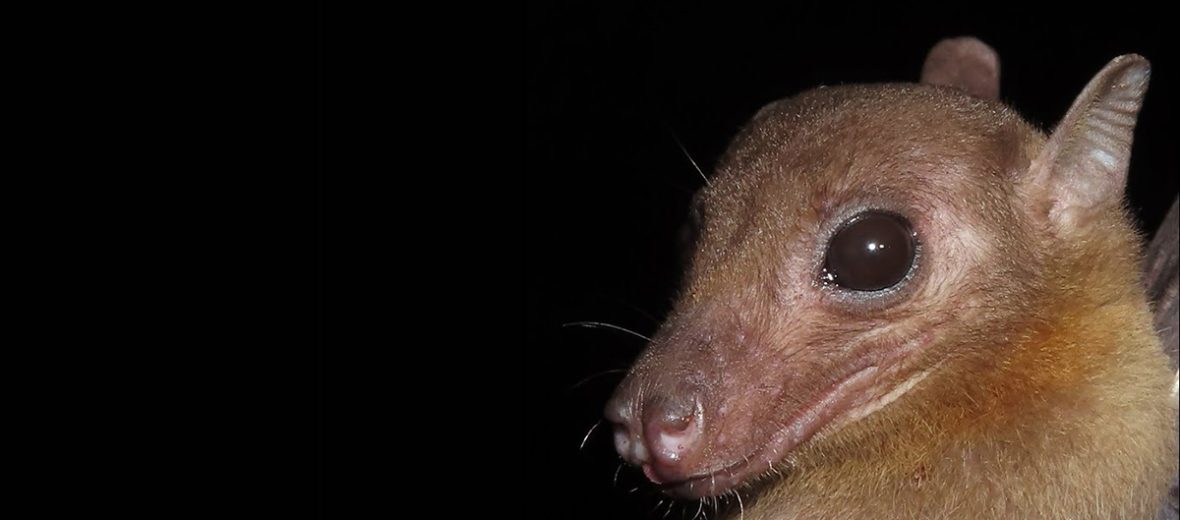
The Madagascan rousette, aka Madagascar rousette, is a species of megabat that hails from the coastal regions of Madagascar. They prefer forests, caves, and subterranean habitats. Sadly, due to habitat loss, hunting, and trapping for bush meat, these critters are listed as Vulnerable by the IUCN. Their numbers are also decreasing. The last study of their population trend by the IUCN was in 2018.
First the Stats…
Scientific name: Rousettus madagascariensis
Weight: Up to 2.3 ounces
Length: Up to 5.1 inches
Wingspan: Up to 20.47 inches
Lifespan: Unknown
Now on to the Facts!
1.) There are 10 known species of Rousettus.
2.) Due to their diet of fruit and nectar, these creatures serve as valuable seed dispersers and pollinators.
3.) These bats are mostly nocturnal (active at night). However, they have been seen active at twilight.
4.) Echolocation is utilized, in part, to find food and aid in nighttime navigation.
5.) Madagascan laws have been put in place, though mostly still ignored, to help protect these megabats.
But wait, there’s more on the Madagascan rousette!
6.) Barn owls prey on these bats.
7.) It has been discovered that up to 4/5 of the Madagascan barn owl’s diet is that of adult Madagascan rousettes.
Did you know…?
These bats have been tested and found to contain antibodies against viruses similar to Hendra, Nipah, and Tioman. This suggests that they have come into contact with these viruses in the past.
8.) The Nipah virus has been proven to be significant to humans, causing symptoms like fever and more; potentially even causing death.
9.) In Ankarana National Park, where many Madagascan rousettes make their day roosts, tourism is a common sight. It is presumed that with more and more contact with humans, the bats are becoming desensitized by their presence.
10.) The young are weaned at 8 weeks of age.
Now a Short Madagascan Rousette Video!
Be sure to share & comment below! Also, check out the Critter Science YouTube channel. Videos added regularly!
Want to suggest a critter for me to write about? Let me know here.
Some source material acquired from: Wikpedia & IUCN



